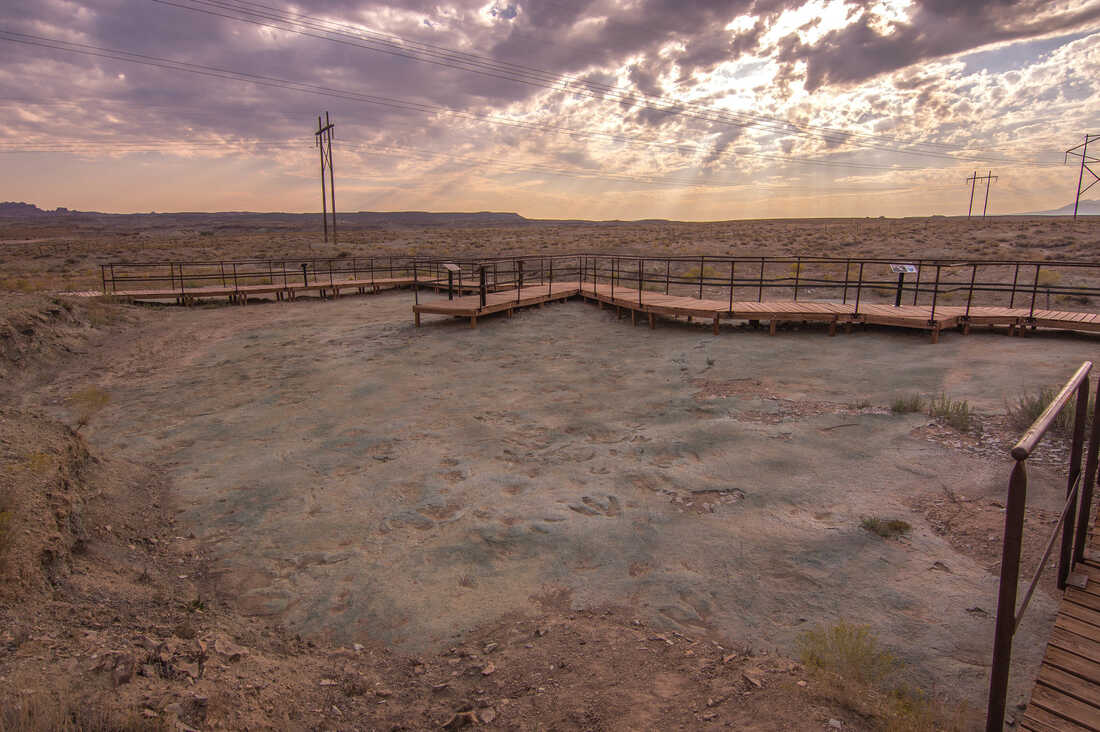
The Mill Canyon Dinosaur Tracksite is in Utah. Some of the tracks and fossils have been damaged by a construction project.
Wayne Hsieh/FlickrThe federal Bureau of Land Management recently acknowledged that a site in Utah containing dinosaur and other animal tracks was damaged during a recent construction project.
There had been some minor damage to the tracks and fossils at the Mill Canyon Dinosaur Tracksite.
Unfortunately, little can be done to restore broken or eroded tracks left exposed in situ.
The weight of the machinery on the track-bearing surface may have led to the formation of small microfractures. Natural degradation may be accelerated in these areas in the future.
The bureau began work to replace the boardwalk at the tracksite, which sees thousands of visitors.
The Mill Canyon Dinosaur Tracksite is approximately 112 million years old and contains more than 200 tracks and traces of at least 10 different animals.
In the course of the project, workers drove a backhoe and other construction vehicles over parts of the site that contained tracks, in some cases causing damage.
After locals reported damage at the site, the bureau stopped work on the project.
Patrick Donnelly, with the Center for Biological Diversity, said at the time that he was absolutely outraged that the BLM had apparently destroyed one of the world's most important paleontological resources.
The events surrounding the damage to the site were unfortunate and could have been avoided according to Breithaupt.
After the publication of the assessment on Wednesday, the Bureau of Land Management posted a statement on its website that said it was committed to protecting fossils on public lands and that the replacement of the boardwalk was necessary.
To ensure this doesn't happen again, we will follow the recommendations in the assessment, seek public input, and work with the paleontology community as we collectively move forward on constructing boardwalks at the interpretive site.
The bureau said it would draft a supplemental environmental assessment before it resumed construction at the site. It expects to make a decision this summer.